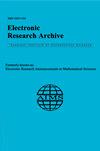Energy-to-peak control for switched systems with PDT switching
IF 1
4区 数学
Q1 MATHEMATICS
引用次数: 0
Abstract
This paper investigates the issue of energy-to-peak control for continuous-time switched systems. A generalized switching signal, known as persistent dwell-time switching, is considered. Two different strategies for state-feedback controller design are proposed, using distinct Lyapunov functions and a few decoupling techniques. The critical distinction between these two strategies lies in their temporal characteristics: one is time-independent, while the other is quasi-time-dependent. Compared to the former, the latter has the potential to be less conservative. The validity of the proposed design strategies is demonstrated through an example.PDT开关系统的能量-峰值控制
研究了连续时间切换系统的能量到峰值控制问题。考虑了一种广义的开关信号,称为持久驻留时间开关。利用不同的李雅普诺夫函数和一些解耦技术,提出了两种不同的状态反馈控制器设计策略。这两种策略的关键区别在于它们的时间特征:一种是时间无关的,而另一种是准时间相关的。与前者相比,后者有可能不那么保守。通过算例验证了所提设计策略的有效性。
本文章由计算机程序翻译,如有差异,请以英文原文为准。
求助全文
约1分钟内获得全文
求助全文

 求助内容:
求助内容: 应助结果提醒方式:
应助结果提醒方式:


